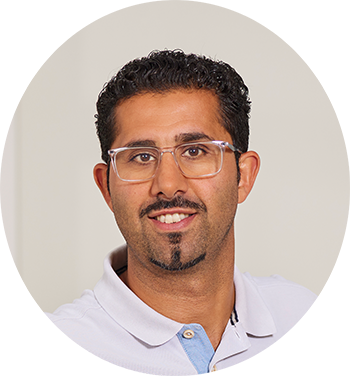Discussing the "clinic experience" of ozone therapy provides a practical, real-world perspective that goes beyond the theory.
Here’s a detailed look at what the experience is like for both the patient and the practitioner, based on common reports and clinical protocols.
The Patient's Clinical Experience
The experience varies significantly depending on the method used. Here’s a breakdown of the most common clinical procedures.
1. Major Autohemotherapy (MAH) - The Most Common Systemic Treatment
This is often the core treatment for chronic conditions. The experience is methodical and feels very much like a medical procedure.
The Setup:*You are in a comfortable chair, similar to a blood donation setup. The environment is a clean, professional clinic.
The Procedure:
1. Blood Draw:*A clinician (often a doctor or nurse) places an IV line and draws a specific amount of blood (e.g., 100-200ml) into a sterile, anticoagulant-treated bottle or bag. This feels exactly like having blood taken for a test.
2. The "Ozonation":*The doctor then slowly injects a precise volume and concentration of medical-grade ozone-oxygen gas into the blood bottle/bag. You will see the gas bubble through the blood. The blood is then gently mixed for several minutes. During this mixing, the blood changes from dark, venous red to a bright, scarlet red. This is a visual confirmation of the oxygen release from ozone, improving the blood's oxygen-carrying capacity.
3. Re-infusion:*The now-ozonated blood is slowly re-infused back into your vein over 15-30 minutes. This is the "sitting and waiting" part of the process.
Sensations During and After:
Most people feel nothing unusual*during the re-infusion.
Some report a faint, metallic taste in their mouth or a slight warmth in their body, which is transient and considered normal.
After the procedure,*the most common report is a surge in energy and mental clarity*within the first 24-48 hours. Some feel a sense of well-being.
A smaller subset of patients may experience a "Healing Crisis" or Herxheimer Reaction. This involves transient fatigue, headache, or body aches as the body detoxifies or reacts to the die-off of pathogens. Practitioners often see this as a sign that the therapy is working and manage it by adjusting the ozone dose.
2. Rectal Insufflation - A Common and Gentle Systemic Method
This is a very well-tolerated method with minimal sensation.
The Setup:*You are in a private room, lying on your side on an exam table.
The Procedure:*A very thin, flexible, lubricated catheter is inserted a few inches into the rectum. A slow, low-pressure stream of ozone-oxygen gas is administered for a short period (typically 30 seconds to 2 minutes).
Sensations During and After:
Most people feel only a sense of mild fullness or pressure*in the lower abdomen, similar to the need to pass gas. The gas is absorbed quickly, and the sensation dissipates shortly after the procedure.
It is not painful.
Patients can usually drive themselves home and resume normal activities immediately.
This method rarely causes a strong Herxheimer reaction, making it a good starting point for very ill or sensitive patients.
3. Prolozone Therapy (Joint Injection) - For Musculoskeletal Pain
This experience is very similar to a cortisone shot or other joint injection.
The Setup:*The practitioner identifies the painful joint, ligament, or tendon (e.g., a knee, shoulder, or spine). The skin is thoroughly cleaned and sterilized.
The Procedure:
1. The practitioner may first inject a local anesthetic to numb the area.
2. They then inject a mixture of ozone gas and therapeutic agents (like procaine or vitamins) directly into the damaged tissue.
Sensations During and After:
You feel the pinch and pressure of the injection.
There is often a temporary increase in pain and stiffness for 24-72 hours*as the treatment causes a localized inflammatory healing response. This is a normal and expected part of the process.
After this initial period, patients typically report a significant and progressive reduction in pain and increased mobility*over the following days and weeks. A series of 3-5 injections is common for lasting results.
The Practitioner's Clinical Experience
From the clinician's perspective, the experience is one of observation, titration, and building a treatment plan.
1. The "Art" of Titration:*A skilled practitioner doesn't use a one-size-fits-all dose. They start with a low concentration and volume of ozone and carefully observe the patient's response. They ask:
How was your energy after the last treatment?
Did you have any fatigue, headache, or changes in your symptoms?
Based on this feedback, they titrate the dose up or down*to find the "sweet spot" that provides the maximum therapeutic benefit with minimal side effects. This is a dynamic process.
2. Observing Patient Outcomes:*Over time, practitioners see patterns. They note:
Wound Care:*They see non-healing diabetic ulcers finally close up and heal.
Pain Management:*They see patients with chronic knee or back pain who failed other treatments regain function and reduce or eliminate pain medication.
Chronic Illness:*They witness patients with Lyme disease or Long COVID report a "lifting of the brain fog" and a return of energy that allows them to re-engage with life.
These positive outcomes are what fuel the practice of integrative physicians who use ozone.
3. Managing Expectations:*A crucial part of the clinical experience is communication. A good practitioner will explain that:
Ozone is not a "magic bullet." It is a tool to restore the body's own functions.
For complex, chronic illnesses, a series of treatments*(e.g., 10-20 MAH sessions) is often necessary to see significant, lasting change.
It works best as part of a comprehensive plan that includes nutrition, stress management, and sleep.

Dr. Med. Mahmoud Taghavi
Facharzt für Allgemeinmedizin
Facharzt für Arbeitsmedizin FMH
BAV-Offizierarzt
Taucherarzt (SUHMS / GTÜM)



